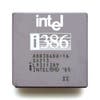

I’m a computer and open source enthusiast from Toronto, Ontario, Canada.
This profile is from a federated server and may be incomplete. Browse more on the original instance.

I’m a computer and open source enthusiast from Toronto, Ontario, Canada.
This profile is from a federated server and may be incomplete. Browse more on the original instance.
This toilet paper at my work (i.postimg.cc)
Capitalism and its consequences have been a disaster for the human anus
Remote or hybrid workers, would you rather work a 4 day week on site, or WFH completely for 5 days a week, for the same pay?
I know this will vary a lot, so hypothetically let’s say you currently WFH/work remotely at least 3 days a week. Your commute to work takes an hour max (door to door) each way. If you were given the choice of a 4 day week working onsite, or a 5 day week WFH (or as many days as you’d like) for the same pay, which would you...
Can't relate to be honest, I still use MBR boot (sh.itjust.works)
Star Citizen Now Selling $48,000 Bundle That Includes Every Ship (www.gamespot.com)
Why are there hidden ads in Voyager?
I just swiped accidentally from the top of the screen and uncovered an off-screen ad in Voyager. What is this and is this disclosed anywhere?...
[Solved] UUID for root reverted to previous UUID
I suddenly got the same problem in /efi/loader/entries all conf files reverted to previous uuid (first post ). To change uuid I just edited all conf files with the correct uuid for root....
deleted_by_author
SMTP Relay Questions
I use O365 Business (Or whatever the heck they call it now) for my email, so for SMTP on all my devices at home, I use an O365 account with an app password, sending as a distro-group so it can have a custom name...
Rustdesk: a open source remote desktop software
About a year ago I introduced Rustdesk as an experiment. For those who don’t know Rustdesk is a piece of software that allows remote access. You can use the public servers or you can use your own private server....
deleted_by_author
[Prime/Epic] DEATHLOOP (gaming.amazon.com)
Breville/Sage Touch Impress cleaning (backflush) cycle (lemmy.ca)
Hi all, recently I acquired a number of 1kg tubs of Cafetto evo cleaner on sale. I figured since Breville/Sage backflush tablets are the 1.5g Cafetto variety (see photos), I can probably safely replace them with Cafetto powder....
First vaguely successful attempt at latte art! (lemmy.world)
I have the Delonghi Dedica EC680M, recently swapped the stock steam wand for the Rancilio wand. I have pretty much 0 experience steaming milk, and this is the first time I’ve been able to have milk lay on top without being a formless blob! Just super excited and wanted to share lol
All TTC subway riders getting cellphone service starting Oct. 3, federal minister says (www.cbc.ca)
“I know what NOT to do, what should I actually DO?” — a short primer for being publicly charming as a dude (medium.com)
hurting but comforted (imgur.com)
She just got diagnosed with Intervertebral disc disease (IVDD) & can’t walk or stand very much suddenly. We’re adapting & right now she’s in her favorite place in this universe - nuzzled into my boyfriend’s side
Need help finding a great KVM Switch
Hi everyone!...